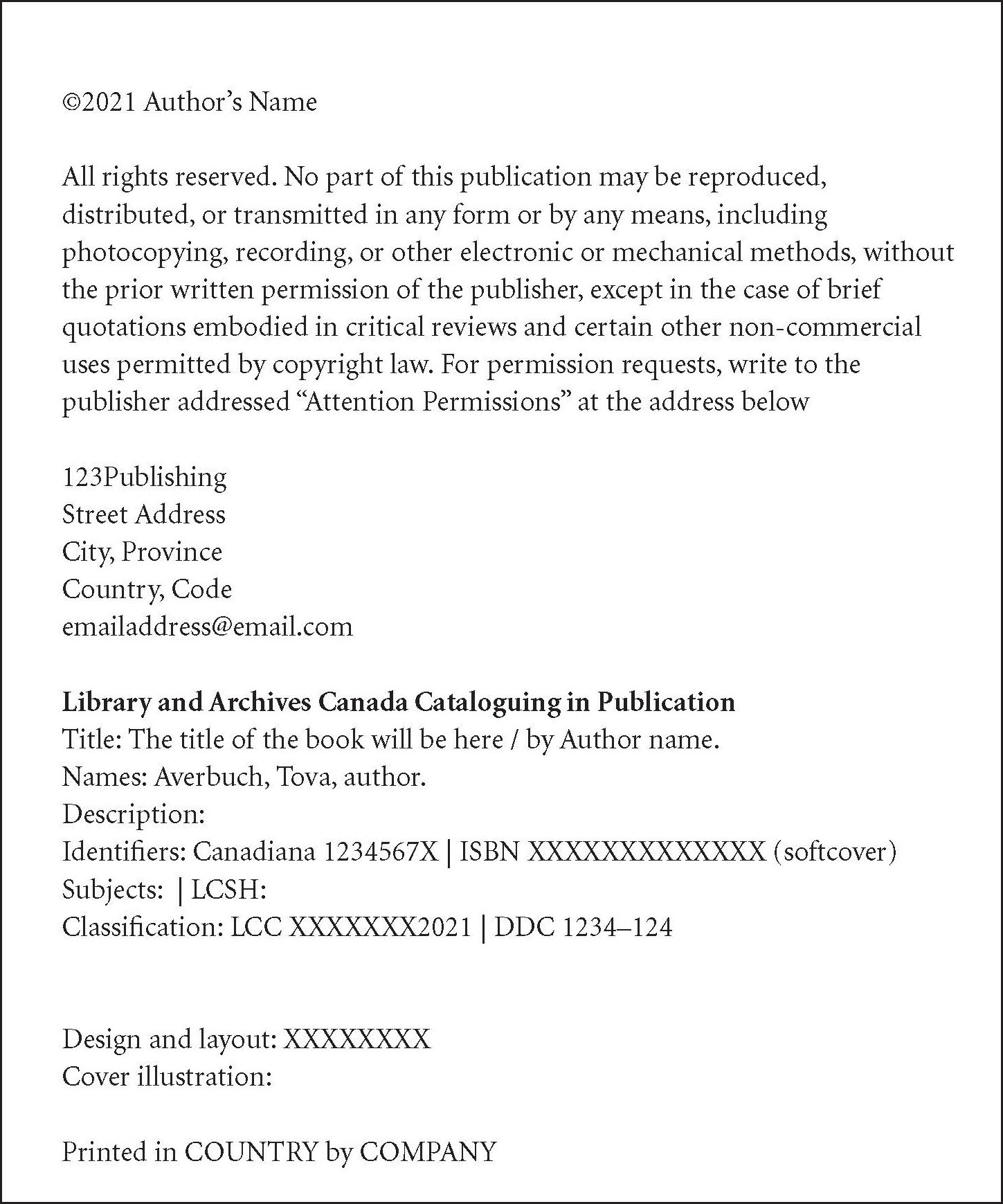The Copyright Page
WHAT GOES ON THE COPYRIGHT PAGE?
The copyright page, which is usually on the back of the title page, contains the copyright statement, library cataloguing information, credits for photography, design, page layout, and printing, as well as contact information for the publisher and distributor.
1) The Copyright Statement
In Canada, to register a copyright you print a copyright statement inside the book. This copyright will be recognized in many countries. The copyright statement includes the copyright symbol (©) followed by the year and the name of the holder of the copyright (usually the author). For more detailed information visit the Media Awareness Network.
In the United States you can register a copyright by going to the U.S. Copyright Office.
To make your own copyright statement you can copy one from a similar book (and country) and then adjust it to your needs.The copyright statement usually goes on the reverse side of the title page (page 2).
2) Contact Information
Contact information goes below the copyright statement and is meant to provide a contact for people who would like to review the book, get permission to reprint portions of the book, or just buy the book. Use contact information that is not likely to go out of date. If you don’t want your own name printed here, you can make up a company name and just use that.
3) ISBN and CIP data
The ISBN (or International Standard Book Number) is a unique identification number that is recognized in 159 countries and territories. Once a number has been assigned to your book, people all over the world will be able to search for the book by that number. Note that an ISBN is needed in order to create a barcode.
To get an ISBN you need to apply to the ISBN agency in your country. Obtaining an ISBN number is free and you can do it by filling out an online form. You should make this application early in the layout process as the ISBN is needed to apply for CIP data (see below) and this whole process can take several weeks.
In Canada you will find the online form at the Canadian ISBN Service System (CISS) here.
In the United States go to isbn.org.
Note that if you plan to publish a series of books, you can apply for several ISBNs at a time and later you can assign one of these numbers to the next books in the series.
CIP Data is the information that libraries use to catalogue your book and obtaining CIP data is a free service in Canada. The application for CIP requires your ISBN number, so apply for the ISBN first. Note that, in Canada, CIP data is no longer available for self-published books, but you can get around this by using a company name as the publisher.
In Canada, to obtain CIP data, contact the National Library and fill out the form there. In several places you may be asked to attach things like the title page, and the preface, but often these sections of the book will not be ready when you are applying so you can send them later. You should make this application early in the layout process so as not to delay book production.
In the United States contact The Library of Congress.
4) Credits for artwork, design work and printing
The last things to go on the copyright page are credits for such things as images used in the book, book design, and printing.
CONTACT US at info@self-publish.ca
to discuss your self-publishing project.

